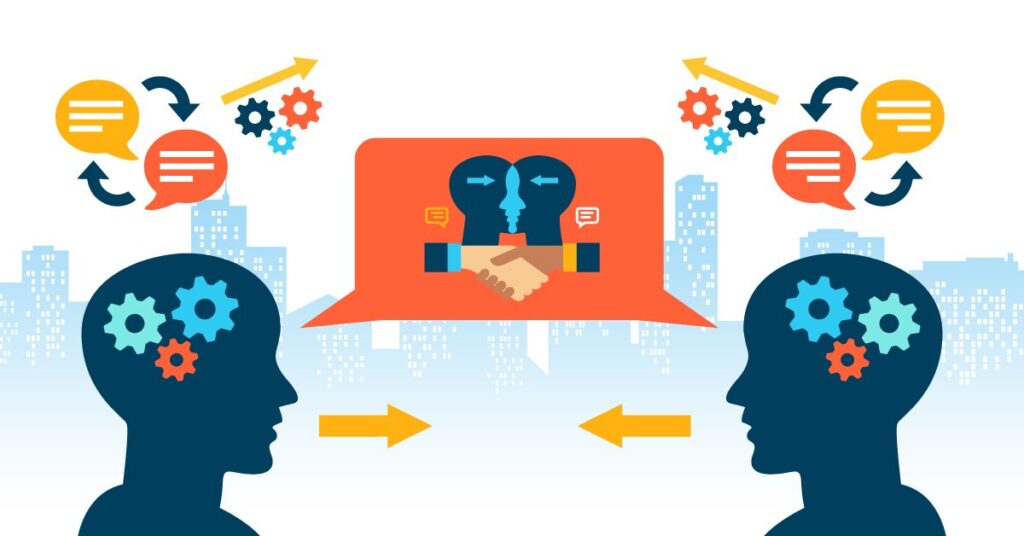Human language is at the heart of how we express thoughts, emotions, and ideas. In therapy, especially online therapy, language is a key tool for healing and personal growth. As the world of mental health care increasingly shifts online, the role of language has never been more significant. When engaging with online professional therapists, communication becomes even more important, as verbal and written language are the primary means of interaction.
In this article, we’ll explore the essential role human language plays in online therapy, how therapists use it to help their clients, and why it’s a powerful tool for mental health.
What Is Online Therapy and Why Is Language So Important?
Online therapy, sometimes called teletherapy, involves counseling sessions conducted over the internet through video, audio, chat, or email platforms. At Bayridge Counselling Centres Online Counselling, clients can access professional therapists without needing to travel. These sessions rely heavily on language—whether it’s spoken during video calls, written in messages, or expressed through body language visible over a screen.
Human language, in all its forms, is essential for online therapy for several reasons:
- Expression of Thoughts and Emotions: Clients share their feelings and thoughts with their therapist through words. It’s a space where they can freely express their struggles.
- Therapist Feedback: Therapists use language to provide feedback, advice, and strategies for managing mental health.
- Building Rapport and Trust: Clear communication helps build trust between the client and therapist, creating a comfortable environment where the client can feel heard and understood.
Key Elements of Effective Communication in Online Therapy
While language may seem like a simple exchange of words, its use in therapy is much more complex. Here are some key elements that define how human language is applied in online therapy settings:
1. Active Listening by Therapists
Therapists use active listening to truly understand what their clients are communicating, beyond just hearing their words. In online sessions, therapists must be particularly focused on the tone, pace, and emotions behind the words. This allows the therapist to:
- Recognize underlying emotions.
- Understand the full meaning behind a client’s words.
- Provide more meaningful and relevant feedback.
2. Empathy and Validation
Empathy is a critical skill that online therapists use to connect with their clients. Using compassionate language, therapists validate their clients’ experiences, making them feel understood. For example, when a client expresses frustration, an empathetic response might be, “It sounds like you’ve been feeling overwhelmed lately, and that must be really challenging for you.” These simple yet powerful words can make a world of difference.
3. Reflective Language
Reflective language is a technique therapists use to mirror what a client has said, helping them process their feelings. This might sound like, “It sounds like you’re feeling anxious because of the changes at work,” allowing the client to hear their own thoughts reflected back. This helps clients better understand their emotions and often leads to insights.
4. Clear and Simple Explanations
In online therapy, it’s important for therapists to explain therapeutic concepts in a way that clients can easily understand. Whether explaining a cognitive-behavioral technique or offering tips for stress management, clear language ensures clients grasp the strategies being offered.
Steps in an Online Therapy Session: How Language Plays a Role
Online professional therapists use language in various ways throughout a typical online therapy session. Below are the steps involved in an online therapy session and how communication is integral to each part:
Step 1: Initial Contact and Intake
When a client first reaches out for therapy, they provide information about their current challenges. The therapist uses language to ask open-ended questions, inviting the client to share their story. This step lays the foundation for all future communication, as it establishes the therapist-client relationship.
Step 2: Setting Goals and Expectations
Once a therapist has an understanding of the client’s needs, they’ll use language to set clear goals and expectations. This ensures both parties understand the focus of the therapy. The therapist might say, “It sounds like improving your anxiety management is a priority for you. Let’s work on that together.”
Step 3: Therapy Sessions
During therapy sessions, therapists rely on language to guide the conversation. This includes:
- Asking questions to explore deeper feelings.
- Offering advice or techniques to cope with specific issues.
- Giving encouragement and support through validating words.
For example, if a client struggles with self-doubt, a therapist might gently challenge negative thinking patterns by saying, “Let’s look at the evidence for and against that belief.”
Step 4: Feedback and Reflection
After several sessions, therapists often use language to reflect on the client’s progress. They provide feedback on what’s working and offer constructive advice on areas that still need attention. For example, “You’ve made great strides in managing your stress, but we still need to work on those feelings of self-worth.”
Step 5: Conclusion and Follow-up
At the end of therapy or even at the end of a session, the therapist will summarize what was discussed and set up next steps. This ensures clarity and helps clients leave the session with a sense of direction. Therapists might say, “Next week, we’ll explore more techniques for managing your anxiety, but in the meantime, practice the deep breathing exercises we discussed.”
Impact of Language on Emotional Healing
The words we use, and how we express them, can significantly influence the healing process. Language has the power to:
- Reduce Isolation: By sharing their feelings through language, clients realize they are not alone.
- Clarify Thoughts: Speaking aloud or writing down thoughts helps clients make sense of their feelings.
- Encourage Positive Thinking: Therapists can introduce positive language that helps reframe negative thoughts. For example, encouraging a client to replace “I always fail” with “I’m still learning, and that’s okay” helps shift their mindset.
Online Therapy Tools That Rely on Language
Modern online therapy often incorporates different tools and technologies that heavily depend on language. Some common methods include:
- Video Sessions: Spoken language is the main form of communication.
- Text-Based Therapy: Many online platforms allow clients to chat or message their therapists. This written form of communication provides clients with a different way to express themselves, often enabling them to share more openly.
- Email Therapy: Some therapists and clients communicate solely through email, where language is carefully chosen and allows for reflective, thoughtful conversations.
Conclusion: The Power of Language in Online Professional Therapy
Human language is the foundation upon which online professional therapy is built. Whether it’s spoken or written, the words shared between a therapist and client are powerful tools for healing, self-discovery, and growth. Effective communication allows therapists to offer the best support, help clients express themselves, and foster emotional breakthroughs. At Bayridge Counselling Centres certified online professional therapists, the skilled use of language by professional therapists ensures that clients receive personalized care in the comfort of their homes.






